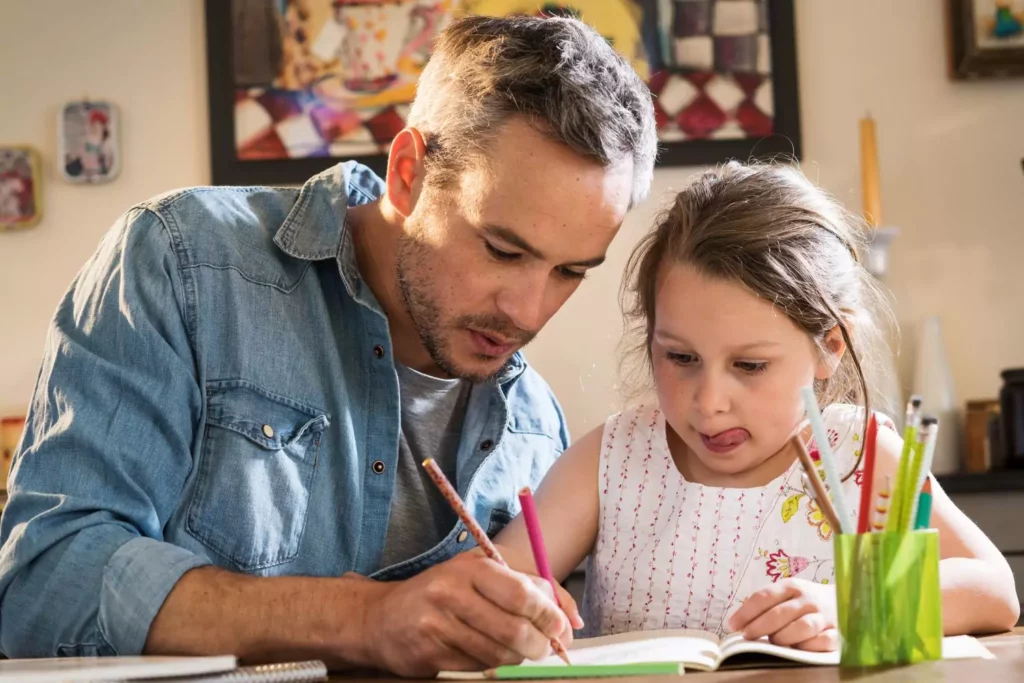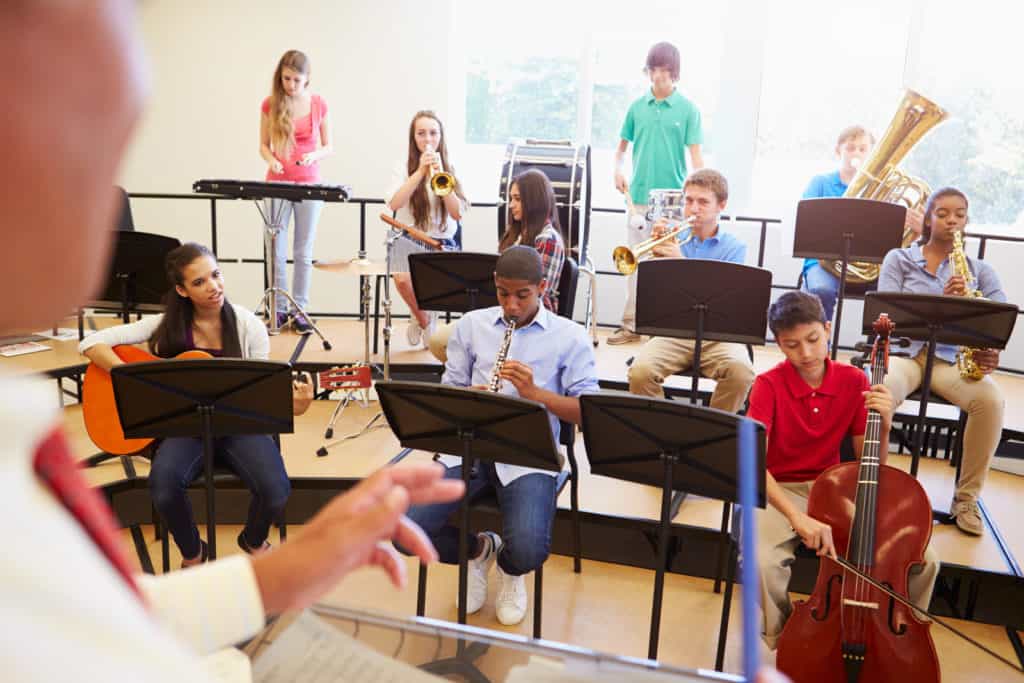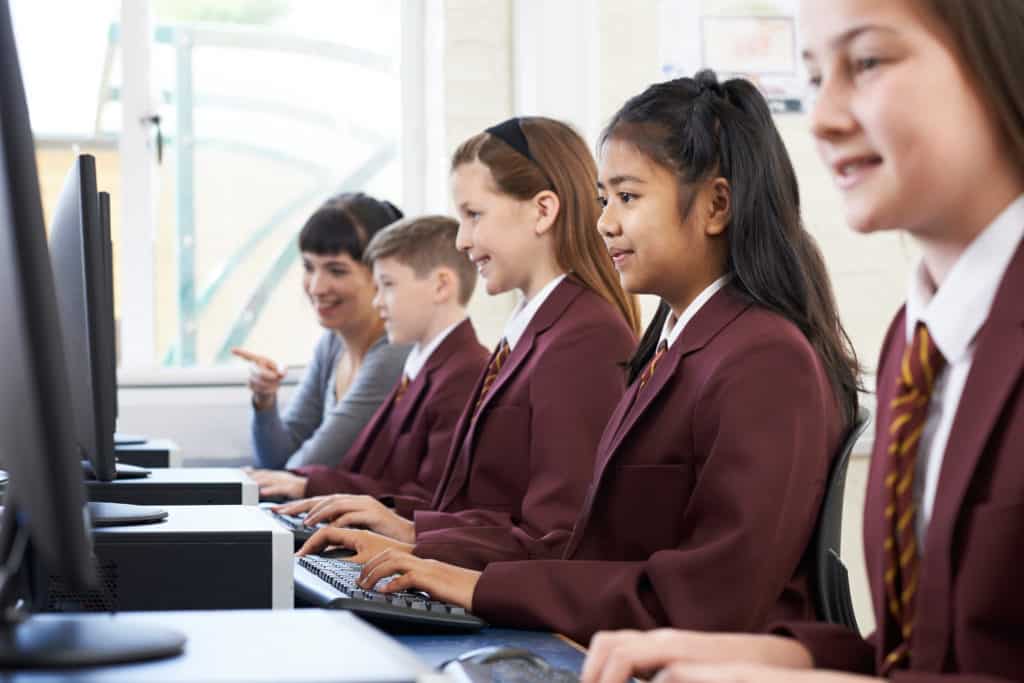
What Is Homeschooling? Is It Right for Me?
Let’s be honest: Homeschooling isn’t for everyone. Here is a look at what homeschooling is, and several ways to determine if it’s best for your family.

The school choice that we make for our children can have a significant impact on their desire to learn, as well as, having an impact on their future personal growth and success.
The school choice that we make for our children can have a significant impact on their desire to learn. It also can have an impact on their future personal growth and success.
“Which school should I choose for my kids?”
It’s a question that all parents ask as their children enter into the school years. But with the ever-expanding school choices for parents, it can be challenging to select which type of school is best for each of our children. Add the twists and turns that the coronavirus pandemic threw into the mix, and it makes knowing how to educate our children seem complicated. The good news? School choice doesn’t have to be confusing or challenging.
Let’s take a look at the current school choice options that parents have, how to discern which types of schools will best benefit your children’s learning, and explore tips and tricks for remote learning during the coronavirus pandemic.
The first thing that we need to do when determining what school choice is best for our kids is to take a close look at our kids themselves. The Bible tells us in Psalm 139 that God created each of our children to be unique. Before they were born, He knew every nuance of who they would be at every stage of their lives. To discern the best types of schools for our children, we too must make an effort to know them.
Ask yourself who exactly is your son or daughter at this point in life? If you have more than one child, chances are that your children have different personalities and styles of learning. What works for your fifth grader, for instance, may not work for your ninth grader. Or perhaps your son and daughter learn in two very different ways.
Not only are there are differences in personality, but your children will grow and change from year to year. The way they learn and interact with the world may change from year to year. Likewise, the best school choice this year may not be the best choice next year.
One benefit of having so many types of schools available to your children is that you can choose to move in and out of these options. For example, you might decide to send your kids to a charter school this year and then homeschool next year. Your choice will depend on the social needs of your child and your child’s learning style.
You will want to consider:
Take note of how your child interacts with the world around them and how they seem to learn best. Then compare schools to determine which school choice makes the most sense for your child.
Dr. Debora Scheffel is the Dean of the School of Education at Colorado Christian University. With an extensive background in assessment and special education, along with a term serving on the Colorado State Board of Education, Dr. Scheffel is a wealth of knowledge when it comes to school choice and which schools may help individual children succeed. She took time out of her busy schedule to discuss with us the intricacies of school choice.
“Kids need to be taught to master the skills that they will need to succeed,” she told us. “If they don’t master those skills, they won’t be able to master the content.”[1] For instance, if a child has not mastered basic math skills, they will not be able to complete more complex algebra equations. Everyday skills that they will use in adulthood—such as balancing their bank account—could become a more difficult task to master without the necessary foundation. It is crucial to select a school that will teach your child, with their unique learning style, how to master those skills and build a solid foundation.
Let’s take a look at the different school options that are available for our kids today. Need a place to brainstorm ideas and take notes? The U.S. Department of Education has created this guide to help you determine which school choice may be best for your child.
Traditional public schools are run by the government and must adhere to state regulations. Education at a traditional public school is free and any child can attend. Some states and districts allow open enrollment, which means that even if you don’t live within the school district, you can choose to send your child to one of their schools, based on availability.
Many students do well in the traditional school setting. They will learn the curriculum that the state government has approved and their success in learning will be measured by standardized test scores. Class sizes can be large and individual attention by teachers can be harder to achieve.
Traditional public schools may use a direct instruction teaching model with the teacher having a central role, or a more facilitated instructional approach, where the teacher serves primarily as a guide. Teachers present the curriculum in a structured and sequential way, based on state standards, and usually present through a lecture, demonstration, or group work. Different learning styles can be accommodated based on the approach of the individual teacher and the curriculum chosen by the district or school.
Charter schools are also public schools and are free and to the public. Unlike traditional public schools, however, charter schools are run by a local governing board rather than by the state government. Parents, teachers, and community members often make up the governing board for the charter school. Many charter schools have a contract with the local school district or the state’s Charter School Institute, which provides a great sense of accountability for the school.
Since charter schools are locally run, they have more flexibility when it comes to the curriculum and teaching approach. Class sizes tend to be much smaller than in traditional settings, which can support a more individualized instructional approach than a “one size fits all” stance. Charter schools range from implementing a classical, direct instruction model to experiential models, so visiting the charter and observing instruction can be very helpful.
Magnet schools are free public schools run by the school district and must adhere to the same state requirements. However, they offer a particular focus for students. Some of the focuses of these schools might include STEM (Science, Technology, Engineering, and Mathematics), arts, vocational training, or training for specific career paths.
Magnet schools can be an excellent option for students who need more engagement than what traditional public schools offers. Class sizes are often smaller than in conventional classrooms, which offers the students a more one-on-one approach. Having an area of focus that interests the student may help them excel in that area and may even help launch them on a specific career path.

Homeschool is a learning method that happens when a parent or group of parents chooses to educate their children from home. While parents must help their children meet a certain level of academic achievement, there is much more flexibility when it comes to the curriculum, teaching style, and even pacing of the material. Parents can be precise in how they tailor the education to their children and provide one-on-one attention. Depending on how the parent structures the homeschool education, there may be much more time for learning skills that traditional schools leave out.
There is a wealth of opportunity for homeschooled children to socialize and interact with other students. Many homeschool programs and extracurricular activities—such as band, orchestra, theater, and sports—accept homeschool students. These opportunities help children to socialize outside of the home and present opportunities for them to connect with other children.
There are many opportunities for learning, and the variety in which a homeschooling parent can present the curriculum is endless. Software programs and online education can help supplement the homeschool curriculum, and many parents tend toward a direct instruction model when teaching their children.
Private schools are privately owned and are not subject to many of the same regulations that govern public schools. Because they do not receive tax dollars, many private schools require tuition for children to attend. Religious institutions founded a majority of the private schools in the United States in order to provide an education for children that infuses their religious beliefs into the curriculum and overall education experience.
Private schools offer smaller class sizes and more individualized attention for students than other types of schools. These schools can provide more challenging coursework for children, and students may have to meet more criteria to get good grades. At the same time, children in private schools tend to have more exposure to the arts, and a great emphasis tends to be placed on values and service to the community.

Online education has seen an increase in recent years, especially with the recent coronavirus pandemic. We will talk more about the impact of the pandemic and the sudden shift toward online education later in this article.
Parents may choose for their child’s education to be provided online either part-time—where the child physically attends school two or three days a week—or full time. Online education can be convenient for families who live a long distance from the school or have children with medical issues that prevent them from being in school. Parents can choose their schedule and set the pace for their child’s learning. There is also more control over what their children are learning.
Online learning involves a lot of 2D learning rather than 3D. Most students learn better in a three-dimensional setting, where they can use all of their senses to learn a skill or concept. In online learning, for the most part, students are only using sight and sound to learn. This style of education may not be a good fit for every child.
Parents also may have concerns over privacy when their children are taking part in online learning. There may be concerns about people hacking into a home network and compromising personal information. Parents may wonder if their students are being watched and if they are being evaluated through stealth assessments. Are their searches being tracked? Be sure that you keep an eye on your student and what they are doing online while learning. Also, make sure that your home network is as secure as possible.
Parents can choose to supplement their child’s education in various ways. For instance, parents may want to hire tutors to develop skills in areas where their child may be struggling. Enrichment programs can open opportunities for kids to discover new interests outside of the classroom. Some such activities might include drawing and painting, cooking, sewing, woodworking, model building, coding, and engineering. Extracurricular activities such as sports, theater, debate, and various other clubs can further engage children in learning new skills and interests. These educational opportunities also open the door for kids to find influential mentors who can encourage them in their individual growth.
The coronavirus pandemic has had a dramatic impact on school choice. While each of these types of schools are still available to our children, all of them have taken a sharp turn toward online instruction. As we ask, “Will schools reopen this fall?” many school districts are looking at a blended model. Students may study on-site for half of the week and do remote learning for the other half. Some school districts may choose to open up on-site learning five days a week for students with learning disabilities and special needs.
The sudden transition to online learning has been difficult for kids and parents alike. Parents have struggled between balancing their work and guiding their children to learn in an online environment. Learning how to eliminate distractions and intrusions into their children’s education has been challenging.
Students themselves tend to have difficulty learning online unless it is in small group sessions. Children in all types of schools tend to learn best with all five of their senses engaged. Online learning only involves two of those senses: sight and sound. Most students also tend to learn better from synchronous learning than they do from asynchronous learning. An online environment offers both styles.
Synchronous learning occurs in real-time. Educators and students engage with each other through online video platforms such as Zoom. Teachers are able to see their students’ reactions and can tell right away if a student is confused. Students are able to ask questions as they arise and clarify their understanding of a topic.
Asynchronous learning is a recorded style of learning that can be done at any time or any place. Teachers upload reading materials, lectures, and notes, and then the students download them later. While this approach has the benefit of allowing students to study on their own schedule, it lacks the benefit of live interaction and being able to ask questions as they arise.
Dr. Scheffel states, “Kids need discourse in learning. They need to ask questions as they come to mind. If they don’t get the chance to ask, they forget to ask later. They need to be in the moment and ask questions through those areas of dissonance as opposed to shelving it and muddling through.”
Since coronavirus has put parents and students in the situation of adapting to online learning, here are some tips that can help your students stay engaged and active in their education:
The Bible tells us that we are to “train up a child in the way he should go; even when he is old he will not depart from it” (Proverbs 22:6). If we raise our children with a love of learning, that passion can continue with them for the rest of their lives. The school choice that we make for our children can have a significant impact on their desire to learn. The types of schools we choose can also impact their future personal growth and success.
Take the time to learn about your kids, do your research on schools, and ask God to help you to make the right decisions for your child’s education. The various types of schools and the flexibility in school choice make it easier to adapt to our children’s educational needs as they grow and develop.
[1] D. Scheffel (personal communication, July 31, 2020).



As your teen prepares to go to college, you can foster an understanding of his or her gifts and personality, help match a college’s focus to who he or she is, and assist him or her in facing the realities of finances and other practical factors.
Lorem ipsum dolor sit amet, consectetur adipiscing elit. Ut elit tellus, luctus nec ullamcorper mattis, pulvinar dapibus leo.
Lorem ipsum dolor sit amet, consectetur adipiscing elit. Ut elit tellus, luctus nec ullamcorper mattis, pulvinar dapibus leo.
©2020, 2023 Focus on the Family. All rights reserved. Scripture quotations are from the ESV® Bible (The Holy Bible, English Standard Version®), copyright © 2001 by Crossway, a publishing ministry of Good News Publishers. Used by permission. All rights reserved. May not copy or download more than 500 consecutive verses of the ESV Bible or more than one half of any book of the ESV Bible.





Let’s be honest: Homeschooling isn’t for everyone. Here is a look at what homeschooling is, and several ways to determine if it’s best for your family.

Recognize the differences in how your children learn.

An important parenting strategy is to maintain a connection to your teen, one that keeps her reassured of your love and interest in her life.